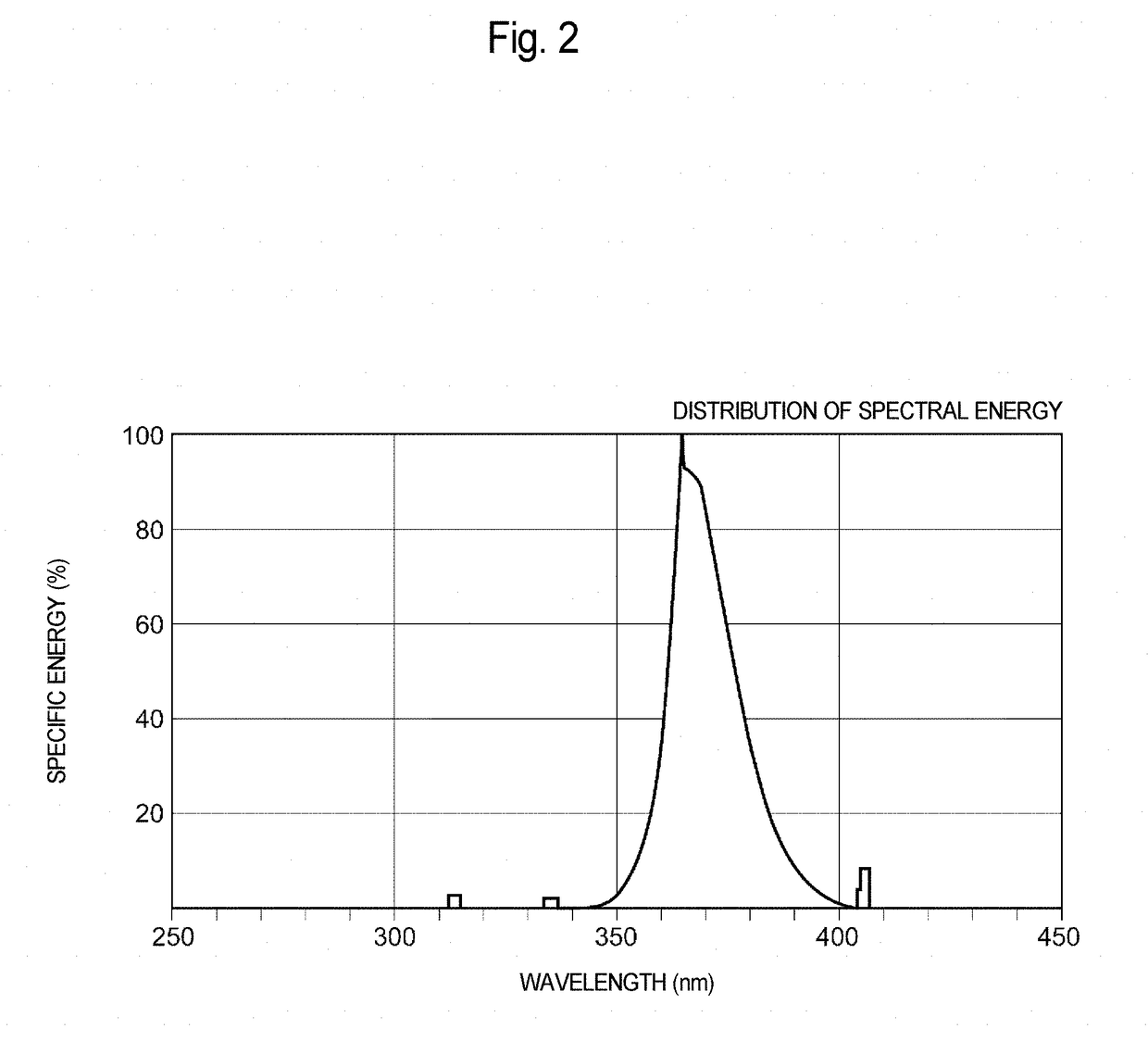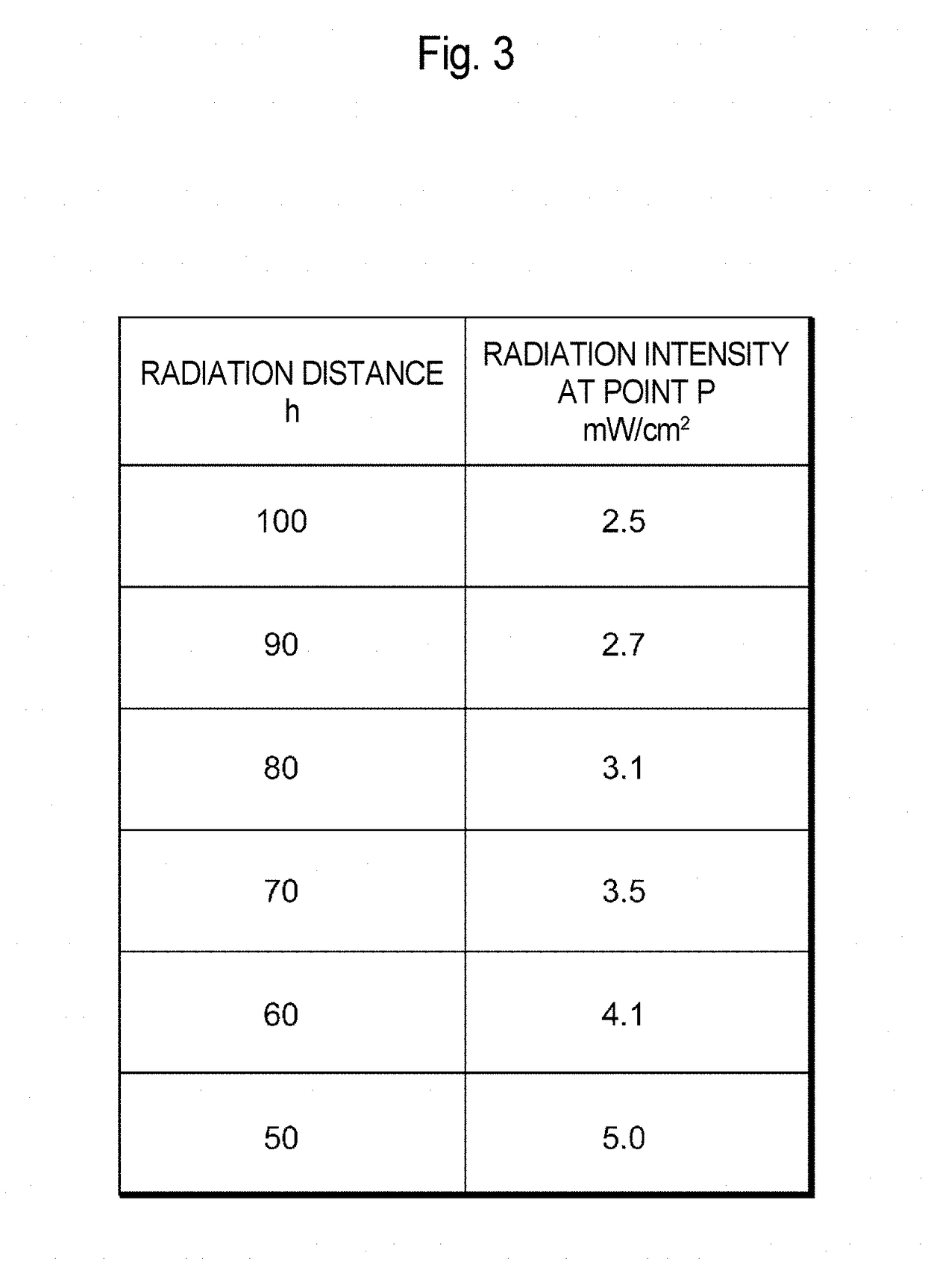Optical element
a technology of optical elements and lenses, applied in the field of optical elements, can solve problems such as eye damage in a variety, and achieve the effects of preventing the onset of myopia, and delaying the progress of myopia
- Summary
- Abstract
- Description
- Claims
- Application Information
AI Technical Summary
Benefits of technology
Problems solved by technology
Method used
Image
Examples
specific example 1
[0033]As the myopia prevention article including the light transmitting portion that transmits ultraviolet light having wavelengths longer than 315 nm but shorter than or equal to 400 nm but does not transmit ultraviolet light having wavelengths shorter than or equal to 315 nm, a phakic intraocular lens was used by way of example to verify the myopia prevention effect thereof in the following experiment:
[0034]The axial length of an eye was first measured, and the following products were implanted in the measured eye in a surgical operation: Artisan (product name) Model 204 (manufactured by Ophtec B.V.), which is a phakic intraocular lens that transmits almost no ultraviolet light over the entire ultraviolet wavelength range; or Artiflex (product name) Model 401 (manufactured by Ophtec B.V.), which is a phakic intraocular lens that only transmits ultraviolet light having wavelengths ranging from about 350 to 400 nm. An increase in the axial length of each of the eyes was then measure...
specific example 2
[0039]An UVA radiator that emits ultraviolet light having wavelength longer than 315 nm but shorter than or equal to 400 nm was used by way of example, and the myopia prevention effect was verified in the following experiment.
[0040]It is known that one eye of a chick is covered with a transparent hemisphere and myopia occurs in the eye (blocked eye) (see Seko et al., Invest. Ophthalmol. Vis. Sci. May 1995 vol. 36 no. 6, 1183-1187, for example). In view of the knowledge described above, one eye of each of 30 White-Leghorn 6-day-old chicks was covered with a transparent hemisphere, and the 30 chicks were separated into a group of 15 non-UVA-irradiated chicks, which were irradiated with no UVA, and a group of 15 UVA-irradiated chicks, which were irradiated with UVA. The two groups were raised for one week under the condition that each day was divided into bright 12 hours and dark 12 hours, and the degrees of progress of myopia of the blocked eyes were studied.
[0041]The UVA was radiated...
specific example 3
[0046]FIG. 6 shows short-wavelength light the intensity of which peaks at 305 nm. When a 5-day-old chick was irradiated with the short-wavelength light shown in FIG. 6 for 2 days, epithelial erosion was formed on the cornea of the chick. Since the short-wavelength light strongly causes tissue injury, the light radiated for the myopia prevention preferably has wavelengths longer or equal to 340 nm, more preferably, longer than or equal to 350 nm, still more preferably, longer than or equal to 360 nm.
PUM
 Login to View More
Login to View More Abstract
Description
Claims
Application Information
 Login to View More
Login to View More - R&D
- Intellectual Property
- Life Sciences
- Materials
- Tech Scout
- Unparalleled Data Quality
- Higher Quality Content
- 60% Fewer Hallucinations
Browse by: Latest US Patents, China's latest patents, Technical Efficacy Thesaurus, Application Domain, Technology Topic, Popular Technical Reports.
© 2025 PatSnap. All rights reserved.Legal|Privacy policy|Modern Slavery Act Transparency Statement|Sitemap|About US| Contact US: help@patsnap.com



